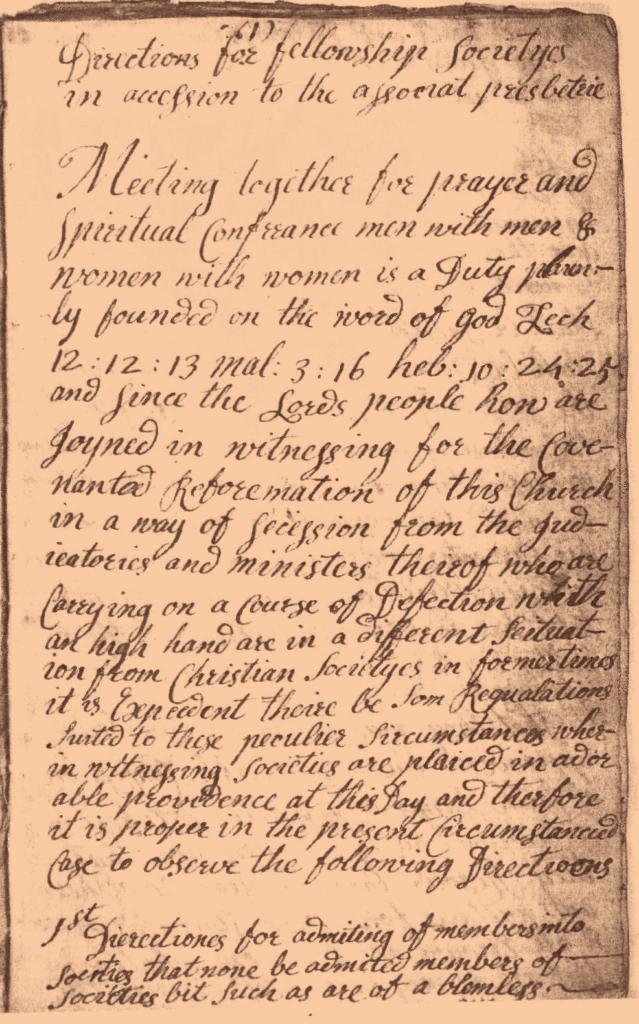“Though thy beginning was small, yet thy latter end should greatly increase.
“For inquire, I pray thee, of the former age, and prepare thyself to the search of their fathers.”
Job 8, verses 7 and 8.
The most successful Plantation of Ulster began in 1609. Among these settlers was Henry Acheson, a Scot, who obtained one of the grants of land consisting of one thousand acres, on 30th July 1610. Henry Acheson built a stone “bawn” or “fort” at Carricklane (close to the present town of Markethill) and settled nineteen Scottish families. It is most probably these nineteen Scottish families were Presbyterians and formed the nucleus of the congregation of Markethill Presbyterian Church, but they were to have somewhere in which to worship, and with other things on their mind, such as building the “bawns” and their homes, it is extremely probable that they worshipped in the Parish Church at Mullabrack and enjoyed the ministrations of pastors adhering to their own faith and discipline, although episcopally ordained.
It was 1693 before the Presbyterian congregation at Markethill had a properly constituted place of worship. The first minister of the newly organised congregation was Rev. Archibald Maclaine M.A., from Kilbride, Arran in Scotland. Mr. Maclaine had the serious distinction of having been one of the first Presbyterian ministers in Ireland to be prosecuted by the Bishops Court for celebrating marriages according to the Presbyterian form. In his day he was considered one of the best masters of the Irish language. Rev. Maclaine continued minister of the congregation until his death, on 20th. July 1734.
From 1734 onwards, the history of the congregation, for a period, remains a blank. During 1739 the original asked General Synod for permission to form themselves into two separately organised congregations and applied at the June meeting to have their own ministers. The Synod minutes state, “Those who adhere to ye old meeting house desired to be erected into a distinct congregation and put into a capacity to call a minister to themselves. They propose security for forty pounds and twenty bolls of oats per annum to a minister. Those who adhere to ye new meeting house also desired to be erected into a congregation and propose security for thirty pounds and fifteen bolls of oats”. The Synod allowed those belonging to the old meeting house (Portnorris) to be erected into a congregation and those of the new meeting house (Second Markethill) to be put under the care of Armagh Presbytery.
First Markethill continued as a separate congregation until the Union of the two congregations in 1919.
A memorial was presented to the General Synod meeting on 18th June 1745, (by adherents of Second Markethill) asking that they be placed under the care of the Presbytery of Dromore, but this application was unsuccessful. The refusal of the General Synod to recognize the discontented members of Second Markethill did not extinguish their hope of obtaining a minister. They immediately turned their attention to the Associate Synod of Scotland (Seceders), and on 26th September of the same year, applied to it for preaching.
Rev David Arrot was ordained on 22nd June 1749 by the Antiburgher (Seceders) Presbytery of Glasgow. He continued minister in Markethill until his death on 16th November 1807, aged eighty-two. Second Markethill continued as a separate congregation until the Union of the two congregations in 1919.
The old division now healed, the two congregations were united as one on 1st November 1919, and became known as First and Second Markethill Presbyterian Church. The Rev. William J.McConnell was inducted as minister of the united congregation on 12th November and continued until his retirement, due to a severe breakdown in his health, due to First World War injuries, on 15th June 1925.
The congregation continued to have the same spirit and desire as their fore-fathers to keep the “Blue Banner” flying in their district and country, ever striving in the name of Jesus Christ, the sole King and Head of the Church, to serve His name to the best of their ability.
“We have heard with our ears, O God, our fathers have told us what work thou didst in their days, in the times of old”
Psalm 44, verse 1.
Extracts from “The Kirk at Markethill” a history of the Congregation, published in 1981.
In Markethill the people were determined to have their own ‘meetinghouse’ in which to worship according to their conscience, even if their landlord, Nicholas, 4th Baronet Acheson, was unwilling to accommodate them in the building of their own meetinghouse. The first Presbyterian Meetinghouse to be erected was situated in the ‘Commons’ in 1693. It was stone built with a thatched roof and in the traditional Presbyterian ‘T’ shaped style, although repaired frequently since then, the original walls seems to have been retained unto 1899 when it was demolished and a new building erected.
A congregational meeting on the 9th November 1896 was held to consider what action should be taken with regard to the Meeting House, which was in great need of substantial repairs. It was decided to build a new Church and a building committee consisting of the congregational committee was appointed to consider ways that additional funds could be raised.
At a meeting of Committee in July 1898, it was agreed that the tender of Mr. Wheelan, Newry, for the erection of the new Meeting House at a cost of two thousand pounds, minus two hundred and seventy-five pounds for tower and thirty pounds for lighting, be accepted.
Inflation seems to have been around to in these times, as Mr. Wheelan reported to the committee on 30th January 1899 “that owing to the prices of material he was unable to carry out his tender.” The committee decided to allow him to substitute brick for sandstone around the windows and doors.
The old Meeting House was demolished and whilst the building was in progress the congregation worshipped as a united congregation with the members of the Second congregation.
On Sunday, 4th February 1900, the congregation and friends met for worship and the opening of the new Church. On that historical occasion the Rev. D.A. Taylor M.A., Moderator of the General Assembly performed the opening and dedication service. Rev. Dr. Edgar, Dublin; Rev. John Irwin M.A., Belfast; and Rev. David Millar B.A., Armagh, conducted other services.
The minister’s name (Rev Henry W. Morrow) will ever be associated with the congregation, for our beautiful Upper Meeting House owes its existence almost entirely to his efforts. For years his energies were devoted to its erection and it was built under his personal supervision. He even went to America and there received a large amount of money to pay for the erection of the Meeting House.
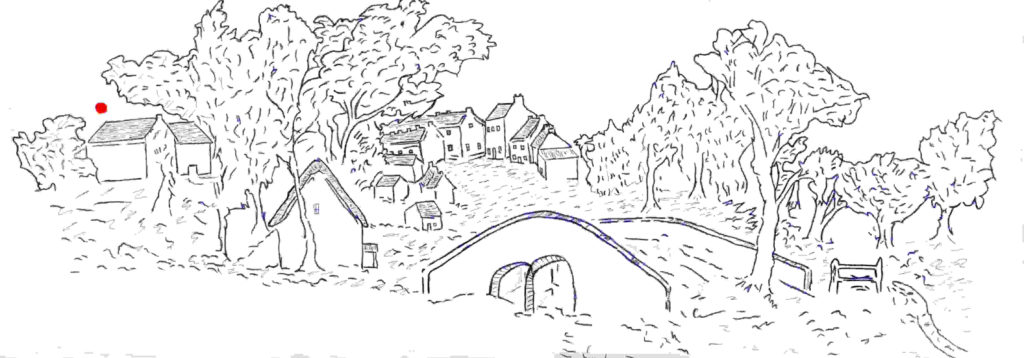
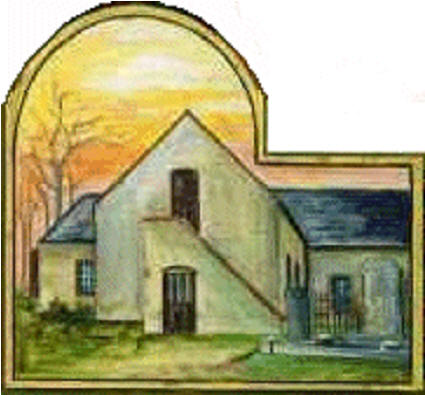
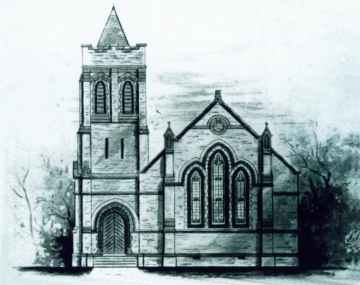
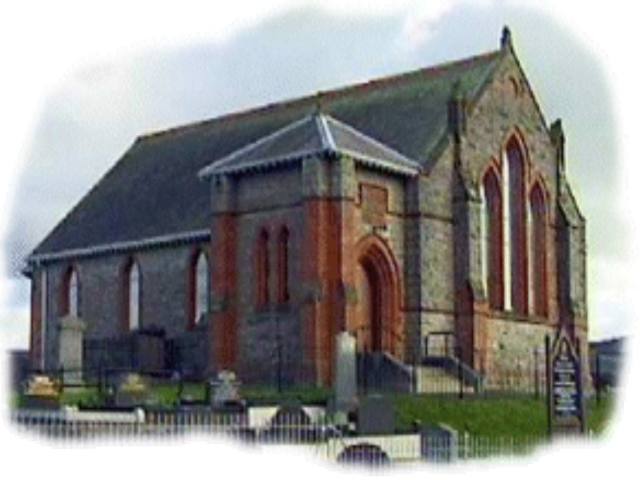
A memorial was presented to the General Synod meeting on 18th June 1745 asking that some discontented of the congregation be recognised as a separate congregation. This Synod refused to do, however, this decision did not extinguish their hopes of obtaining a minister. They immediately turned their attention to the Associate Synod of Scotland (Seceders).
Markethill had now two Presbyterian congregations, those belonging to the old meetinghouse continued to worship in the same building at the “Commons”. Those of the new meetinghouse went about the business of building a new (oblong in shape) meetinghouse adjacent to the main Newry road.
During 1878 the Meeting House had extensive repairs plus the addition of a new wing. (see sketch on right)
Due to its condition, as far back, as the 13th May 1929, a congregational meeting was called to decide whether the Lower Meeting House should be closed or repaired.
On Tuesday, 11th October 1955, a congregational meeting was held to consider the Meeting House, which had become almost derelict. It was decided “that the old church be taken down, but a portion of it be left and rebuilt into a smaller church for use to hold services as required”.
The old building, which was built two centuries previously, was partly demolished and the work began on rebuilding the new edifice. The Baptismal Font from the old building is the sole reminder of the original. The new Meeting House was completely rebuilt and furnished at a cost of about four thousand pounds. This debt was cleared within one month of the re-opening.
The re-opening and dedication took place on Saturday, 28th September 1957, when the Moderator of the General Assembly, the Right Rev. Professor R. J. Wilson M.A., B.D. visited the congregation and dedicated the new building. Dr. J. Lister Marshall J.P., on behalf of the construction committee, said he, “wished to mention a special word of thanks to, Mr. Sam Willis, for help and advice; Mr. Charles Hayes, a great source of help to them in financial efforts; Mr. William Reaney, who had given of his time in decoration; Mr Harold Stewart, for the use of relay and loud speaker; the architect, Mr. George Taylor, for his advice and help; Messrs Rowntree of Richhill, whose advice was very acceptable; and to all those who laboured voluntarily in removing the old building and re-building the new Church, also the ladies, who, over eighteen months had given of their time and goods in providing refreshments on Saturday afternoons for the workers. They were especially grateful to donors of gifts.”
Gifts dedicated were: Communion Table and Chair given by the Rev. T. H. and Mrs Witherow, Vestry Table by the Choir, Vestry Chairs by David Bingham Jnr., Praise Boards by the Johnston family of Carricklane, Flower Vase by John and Mrs. Dougan of Belfast, Vestibule Table by John Burns and family, Bible by Mr. and Mrs. Philpott and family, Pulpit Lighting by the Lockhart family and Collection Plates by Norman and Mrs. Scott. Afterwards, the ladies of the congregation served tea to visitors and members of the congregation, in the Small Memorial Hall.
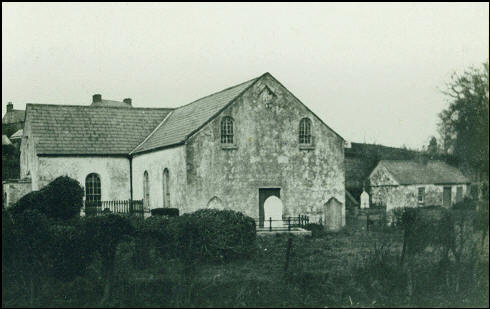
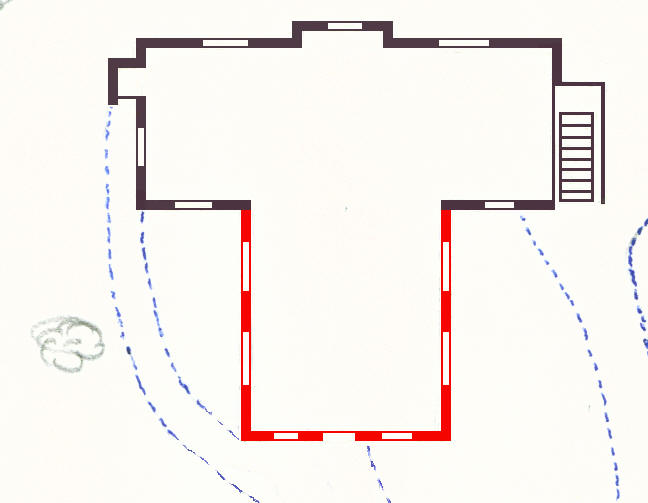


On 6th April 1936, in the presence of a large gathering, which included Viscountess Craigavon and the Right Rev. Dr. A. F. Moody M.A., Moderator of the General Assembly, the Prime Minister of Northern Ireland Viscount Craigavon opened the Robert Montgomery Small Memorial Hall, built in connection with our congregation. The late Robert M. Small in his legacy, that provided the money, with which the hall had been erected, stated, “…….. and the ultimate residue of the [his] property for building, or assisting to build, a hall for public meetings in connection with the First Markethill Presbyterian Church, to be known as the “Robert Montgomery Small Memorial Hall” and on condition that the building should be completed within ten years of his death. Considerable delay was caused in negotiations for obtaining a suitable site, but in the meantime the cost of building materials decreased, while the interest accruing on the money swelled the funds at the disposal of the executors of the will, who were, William Small J.P., of Lattery, David Haire J.P., and Robert Wilson, both of Eleven Lane Ends.
The hall described in a local newspaper as “The Hall is well built and handsome. It was designed by Mr T. E. Houston, Belfast, built by Mr Thomas Whiteside, Kilbracks. It is capable of holding five hundred people, and embodies all the latest developments in architectural construction. Modern features in ventilation, lighting and heating have all been introduced. For the purpose of a Church hall, where facilities have to be provided for badminton, social re-unions and concerts etc., the building is one of the best equipped of its kind in the Province. The money available has been well spent, and the hall was constructed at a cost of two thousand three hundred pounds. A cash balance of fifteen pounds thirteen shillings and eight pence remaining, was handed over by Mr. W. Small, one of the executors and a second cousin of the donor, to the new trustees.”
Captain Rev. T. H. Witherow received the distinguished guests Lord and Lady Craigavon at the entrance to the hall, and the architect, Mr. T. E. Houston of Belfast presented the Prime Minister with a set of pipes as a memento. The dedication ceremony took place inside the hall, the Moderator presiding. Included in the gathering were Mrs. Morrow, wife of the late Rev. Dr. Morrow, a former minister, and the senior minister the Rev. W. J. McConnell, who said he was happy to be present when his old congregation was being honoured by the heads of both Church and State.
Mr. W. Small performed the ceremony of handing over the deeds to the new trustees. Dr. Marshall accepted the deeds on behalf of his fellow trustees, Fredrick Mallagh, George Parr, William Loughlin, William Dalzell, John T Hamilton, John Lockhart and David Lyons. Lord Craigavon, who was received with loud applause, said he “hoped the young people who would use the hail, would think of the donor, and not think it had sprung up in the night. One was too apt to take things for granted, and not inquire how one became the recipient of benefits.”
Major refurbishment of the Hall was undertaken and on Thursday, 29th May 1986, a Service was held in the Upper Church for the the Re-opening and Dedication of the Hall, by the Right Rev. Dr. Robert Dickinson, M.A., Moderator of the General Assembly.
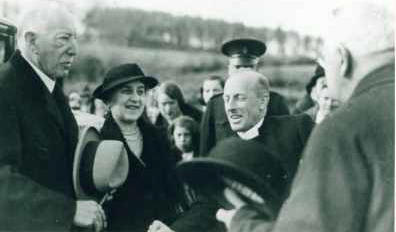

With sufficient funds remaining after the new Meeting House (First Markethill) was built and opened on 4th February 1900, the Lecture Hall was erected for the use of the Sabbath School and other church activities.
The Lecture Hall, having been erected in 1900, was in need of major refurbishment or replacement and it was decided in 1985, to rebuild, at a cost of £32,000. On Thursday, 29th May 1986, a Service was held in the Upper Church for the Opening and Dedication of the new Lecture Hall, by the Right Rev. Dr. Robert Dickinson, M.A., Moderator of the General Assembly.
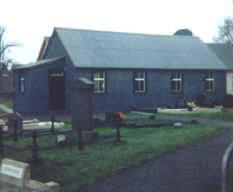
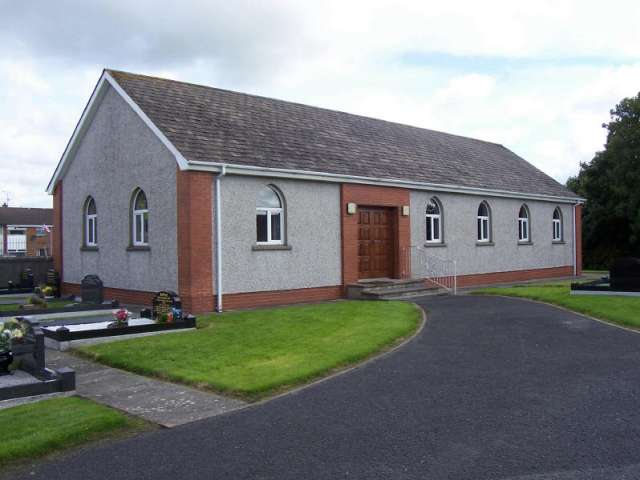
Thirteen acres, three roods and twelve perches or thereabouts, the property of the late Mrs Mackin for sale by Public Auction, on Thursday, 28th March 1889, greatly interested the congregation and they appointed four members of the congregation with full powers to purchase same “at what they considered a fair price.” They reported back to a congregational meeting the next night that they had secured the land at fourteen pounds per acre.
In May 1889, they decided they would build a Manse “for the congregation [Second Markethill] and not in connexion with the General Assembly.”
Things started to move in regard to the building of the Manse, when in January 1890 an architect was appointed. Joseph Small, of Banbridge was the Builder, Robert Fullerton “gave permission to quarry stones in his land on agreement and that suitable sand could be found at either Richhill or Ahorey”.
During the vacancy in 1963, the committee decided that with the Manse vacant, now was an appropriate time to carry out some renovations and modernisation of the kitchen, bathroom and other apartments, with rewiring and new electrical fittings, the installation of background heating and re-decoration of interior and exterior. This work was still in progress at the time of the installation of the new minister (Rev John Rankin). He and his family lived in a large caravan placed in the Manse grounds, until the work was completed.
Again, during the vacancy, (November 1988 – March 1990) extensive refurbishment of the Manse was carried out at a cost of £90,000.00. This work involved building a two-storey extension comprising of new kitchen, bathroom, bedroom and garage. Re-plastering both interior and exterior and re-roofing the entire structure.
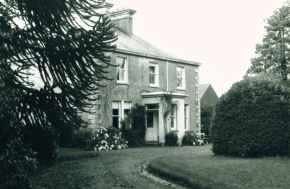

| Ministers Name | Date Installed at Markethill | Date of Resignation | Reason |
|---|---|---|---|
| Archibald Maclaine | 1698 | 20th July 1734 | Death |
| George Ferguson | 10th March 1741 | Retired 1780 | Dies 6th June 1782 |
| Samuel Sloane | 18th June 1780 | 15th March 1793 | Death |
| William Charlton | 19th March 1794 | 15th June 1808 | Deposed |
| Paul Boreland | 26th September 1809 | Retired 1828 | Died 15th July 1831 |
| John Fisher | 23rd June 1823 | 25th March 1842 | Deposed |
| Alexander G. Ross | 5th February 1843 | 24th February 1858 | Death |
| Hillis Kyle | 29th September 1858 | 24th November 1860 | Death |
| George Nesbitt | 29th May 1861 | 7th February 1886 | Death |
| Henry W. Morrow | 30th June 1886 | 16th November 1904 | Installed in 2nd Omagh |
| Hugh H. Moore | 25th January 1905 | 1st November 1919 | Retired to make way fro union of 1st and 2nd. |
| Ministers Name | Date Installed at Markethill | Date of Resignation | Reason |
|---|---|---|---|
| David Arrott | 22nd June 1749 | 16th November 1807 | Death |
| David Moore | 22nd July1808 | December 1818 | Death |
| Robert Morrison | 1st September 1819 | 31st August 1860 | Death |
| Robert Mitchell | 26th June 1861 | 29th August 1882 | Installed in Leckpatrick |
| Hugh McFarlane | 27th March 1883 | 11th February 1910 | Death |
| William J. McConnell | 18th May 1910 | 1st November 1919 | Inducted into the united congregation of 1st and 2nd Markethill |
| Ministers Name | Date Installed at Markethill | Date of Resignation | Reason |
|---|---|---|---|
| William J. McConnell | 1st November 1919 | Retired 15th June 1925 | Died 15th February 1956 |
| Thomas H. Witherow | 3rd February 1926 | Retired 30th April 1963 | Died 1st September 1989 |
| John H. Rankin | 18th September 1963 | Retired 1st November 1988 | Died 27th November 1993 |
| Robert I. A. Allely | 16th March 1990 | 1997 | Installed in Dungannon |
| Daniel Rankin | 8th May1998 | 21st January 2009 | Installed in Strand, East Belfast |
| David J. Irvine | 8th January 2010 | 17th April 2018 | Installed in Trinity, Ballymoney |
Born in Scotland; the son of the Rev. Alexander Maclaine, of Kilmaglass, Argyleshire and also Bute. Before coming to Ireland, Rev. Maclaine seems to have been Episcopally ordained in 1685. He was an eminent minister of the Church of Scotland where he suffered severely for his attachment to Presbyterianism in the persecuting times during the reign of Charles II. On 6th August 1690 he resigned, adhering to Presbyterianism and admitted into communion by Synod. He was installed in Kilbride, Arran on 7th July 1692, resigning in 1698. He came over to Ireland and was installed by the Presbytery of Tyrone in Markethill. Mr. Maclaine had the serious distinction of having been one of the first Presbyterian ministers in Ireland to be prosecuted by the Bishops Court for celebrating marriages according to the Presbyterian form. In his day he was considered one of the best masters of the Irish language. He was Moderator of the Synod of Ulster during 1711-1712.He died on 20th July 1734, and was buried in the graveyard at Mullabrack Parish Church.
Born in County Down, educated in Scotland, licensed by Bangor Presbytery in 1736 and ordained in Markethill 10th March 1741. During his ministry a memorable and historic occurrence took place, in 1739, some of the congregation seceded and formed a congregation at Portnorris (Tullyallen and Mountnorris). Also, in 1745, others seceded and formed the Secession congregation (2nd Markethill). He retired during 1780 and for some time before his death on 6th June 1782, was a confirmed invalid.
The second son of Andrew Sloane, farmer, near Rathfriland, was educated in Glasgow, licensed by Dromore Presbytery in 1780 and ordained in Markethill 18th June 1780. He seems to have been a man of considerable literary distinction. At the funeral of his predecessor he preached a sermon, which was published in 1782. The text was taken from the Book of Job, chapter fourteen, and verse fourteen. The sermon when published, in 1782, consisted of thirty-one closely printed pages. After a brief ministry of thirteen years he died 15th March 1793.
The first son of John Charlton, a farmer of Emyvale, was educated at Glasgow and licensed by Monaghan Presbytery in 1792. He was ordained at Markethill on 19th March 1794; but alas he was not long ordained when a grave moral neglect of duty on his part took place and the congregation laid specific charges against him at a meeting of the General Synod on the 24th June 1794. Fourteen years after his ordination, Armagh Presbytery “dissolved the connection between Rev Charlton and congregation” on the l5th June 1808. He continued to live a precarious life in the district for some time after his suspension. On the 4th June 1833 he was deposed for celebrating marriages irregularly. The date of his death is not recorded.
The fourth son of Matthew Boreland, farmer, of Kilraughts, he was born in 1774, educated at Glasgow 1798, licensed by Route Presbytery 1806. and on 26th September 1809 ordained in Markethill. Nothing is recorded of his ministry, which came to an abrupt end when he became infirm and retired during 1828. He died at Hamiltonsbawn on the 15th July 1831.
Born near Donacloney, educated at Old College, Belfast 1822, licensed by Dromore Presbytery 1824 and ordained in Markethill on 23rd. June 1828. Again the congregation had a minister with whom their relations were far from happy. For a time he was Clerk of the Presbytery of Armagh. On 25th March 1842, the long series of quarrels came to an end, as he was suspended by the Presbytery. From here he emigrated to United States of America where he died of cholera at St. Louis on 2nd August 1850.
A son of James Ross, merchant, Monaghan, he was educated in Glasgow, licensed by the Presbytery of Monaghan in 1840 and was ordained in Markethill on the 5th February 1843. He married Miss Mary Anne McClure of Millmount, Derrycughan, Markethill, in 1843. He died 24th February 1858 and was the first minister of the congregation to be buried in the graveyard surrounding the Meeting House.

He was the son of John Kyle of Maghera, educated at Queen’s College, and Assembly’s College, Belfast. Licensed by Belfast Presbytery in 1857 and ordained here 29th September 1858. Mr. Kyle’s ministry came to an abrupt end when he died 24th November 1860, a period of just over two years in the congregation. He was buried at Maghera Old Graveyard.
A son of James Ross, merchant, Monaghan, he was educated in Glasgow, licensed by the Presbytery of Monaghan in 1840 and was ordained in Markethill on the 5th February 1843. He married Miss Mary Anne McClure of Millmount, Derrycughan, Markethill, in 1843. He died 24th February 1858 and was the first minister of the congregation to be buried in the graveyard surrounding the Meeting House.
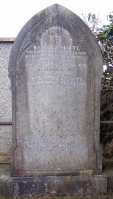
Born 11th December 1857, a son of William Morrow, Magherascourse, Ballygowan, licensed at Comber on 26th May 1884 and ordained here on 30th June 1886. The Rev. Morrow, in 1904, after a ministry of eighteen years, accepted a call from Second Omagh (Trinity) where he was installed on 16th November. Rev. Morrow’s name will ever be associated with the congregation, for our beautiful Upper Meeting House owes its existence almost entirely to his efforts. For years his energies were devoted to its erection and it was built under his personal supervision. He even went to America and there received a large amount of money to pay for the erection of the Church. During his ministry in Second Omagh, in 1919, the Doctor of Divinity degree was conferred on him. Dr. Morrow retired 4th October 1926 and went to live in Finaghy, where he helped in Church Extension. Amongst his writings were, Questions asked and answered by our Lord; The War and Immorality; and The Shadow of God. He died 19th October 1934, in his 77th year.
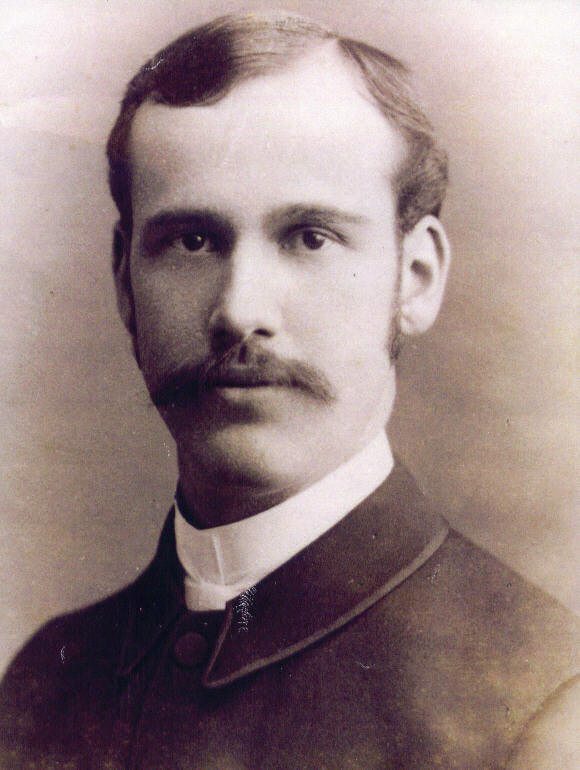
He was born in 1859, licensed by Belfast Presbytery on 4th September 1883; was ordained at Kells, County Meath, 17th October 1883, installed minister of Hilltown on 30th June 1885 and installed as minister of this congregation on 25th January 1905. Rev Moore retired as minister of First Markethill on 1st November 1919, to facilitate the Union of First and Second Markethill. It is from his little book “Three Hundred Years of Congregational Life” that many of the facts contained in this web were obtained. In 1928, he sold the Manse and went to reside at Newcastle, where he died 23rd October 1940.
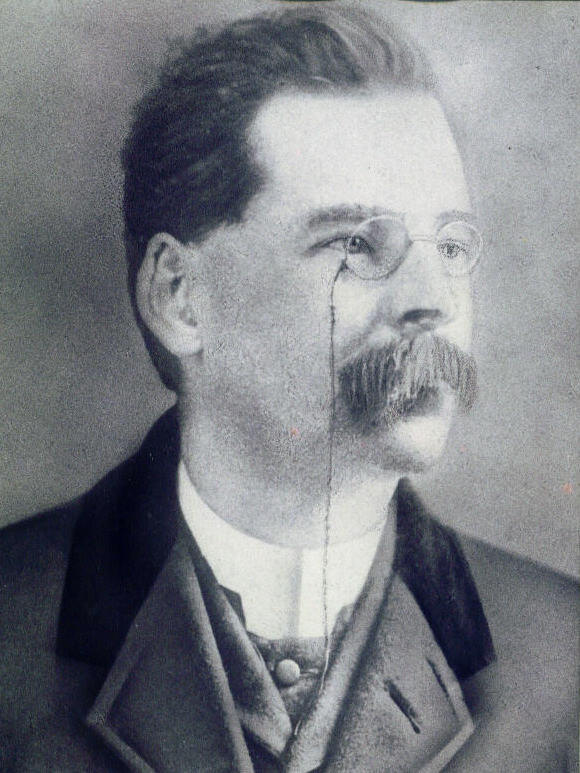
He was the son of Rev. Andrew Arrott M.A., Dunnichen, near Forfar, Angus, 1716-1745, and Dumbarrow 1745-1760. Born on 6th November 1725, he entered his study of theology in 1745. His call, to Markethill was signed by seventy-five members and twenty-five adherents and was sustained by the Synod and accepted by Rev. Arrott, who was ordained on 22nd June 1749 by the Secession Presbytery of Glasgow. The Antiburghers had now two settled congregations in Ireland, Lylehill and Markethill. When ordained he had a very wide district placed under his supervision, and was instrumental in founding four other congregations within its borders, Moira, Sheepsbridge (Downshire Road, Newry), Tyrones Ditches and Ahorey. In 1786, part of Markethill congregation seceded and erected a meetinghouse at Ahorey. In 1798 part of the congregation again seceded and by early 1799 a new Seceder congregation at Redrock was erected. Mr Arrott continued as minister of the congregation up to his death on 16th November 1807, aged eighty-two. He was buried in Kilcluney (Glassdrummond) graveyard.
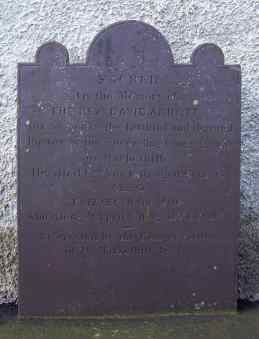
Second son of James Moore, Aghabeg, County Monaghan, he graduated M.A., Glasgow 1804, was licensed by Markethill Antiburgher Presbytery in 1808 and ordained minister of Markethill on 22nd July 1808. In 1809, he married Anne, daughter of Samuel McCullough, of Cladymore. He was moderator the Antiburgher Synod in 1814.
He died in December 1818. The Rev. John Moore D.D., Connor and Elmwood, the Rev. Samuel James Moore, Ballycopeland, Donaghmore and Third Ballymena (Wellington Street.) and Robert McCullough Moore who emigrated to Canada, were sons.
Son of Philip Morrison, Ahorey, he was educated at Glasgow in 1812 and the Associate Anti-Burgher Theological Hall, was licensed to preach by the Markethill Anti-Burgher Presbytery in 1818, and ordained here on 1st September 1819, In the same year he married a daughter of William Moody, of Poyntzpass. They had 6 children, John Moody, Philip James, David Harbison, Thomas, Sallie and Ann. Mr Morrison was chosen Moderator of the Secession Synod 1834-35. Mr Morrison did not take his congregation into the General Assembly unto 1845 and placed under the care of Newry Presbytery. He died at Sandy Hill, Laurelvale, Tandragee, on 31st August 1860, having only a few months earlier asked leave to retire. He is buried in the graveyard attached to the Meeting House, and a square monument, near the Meeting House, marks his grave.
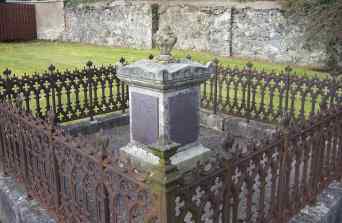
Son of Robert Mitchell, farmer, Drumnagore, he was born in 1830, licensed by the Free Church Presbytery of Glasgow, and ordained here on 26th June 1861. Mr Mitchell resigned from the congregation on 29th August 1882 and was installed at Leckpatrick on 21st September 1882. He retired in 1900 and died 13th January 1901, aged 70 years.
Son of James MacFarlane and was born at Letterbrack, Plumbridge. He was licensed by Strabane Presbytery, was ordained minister of the congregation on 27th March 1883. He seems to have been a brilliant scholar, as it is reported of him, “At a recent competitive examination held in Queen’s College, Galway, Mr McFarlane, obtained the Senior Scholarship, value forty pounds, on Nature Science.” During his ministry, in 1890, the congregation obtained and built a Manse. Mr McFarlane died on 11th February 1910, aged 56 years.
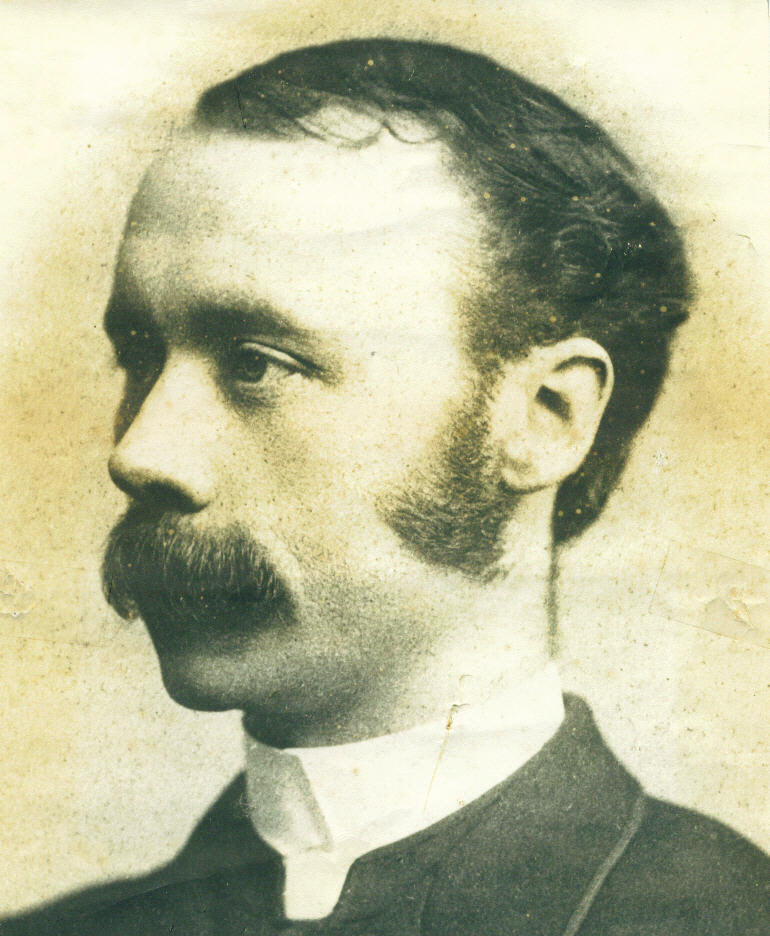
The son of George (Merchant) and Mrs. McConnell of Kerrykeel, County Donegal, 16th April 1885, licensed by Letterkenny Presbytery 1901, ordained at Dromore, on the 25th November 1909, was installed in this congregation on Wednesday, 18th May 1910. On 22nd June 1911, he married Miss Margaret Stewart (Madge) Small, daughter of Robert and Mrs Small of Markethill. They had two sons the Rev. Brian McConnell M.A., D.D., minister of Donore, Dublin, who died 12th February 2005 and Robert Hay Stewart (Rory), born 25th July 1912 and killed while on active service on 23rd August 1940. Mr. McConnell, like many during this period, volunteered to the call for men in the Great War. He went first in 1915, as a Chaplain to the Forces in France, with the 16th Irish Division and subsequently at General Headquarters, where among those who attended his services was Earl Haig. Mr. McConnell was twice mentioned in dispatches. Mr. McConnell continued minister of the united Congregation of First and Second Markethill Presbyterian Church (united on 1st November 1919).
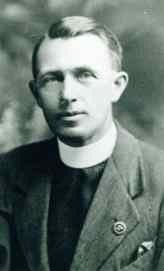
The Rev. W. J. McConnell, was inducted into the united congregation at a service on the 12th November 1919. In 1924, Mr. McConnell suffered a severe breakdown in his health, due to War injuries, and with no improvements in his health Mr. McConnell was forced to retire as minister of the congregation on 15th June 1925. He went to live in Belfast, where in 1931 he again took up the ministry and served as a minister in the new Church at Stormont, where he stayed until 1936. He died on 15th February 1956.
The son of the Rev. William and Mrs Witherow. His father was successively minister of First Donaghadee, First Killyleagh and Westbourne Belfast. He was educated at Campbell College 1902, Academical Institution Belfast 1909, graduated Queens University 1912, Magee College 1914, and became a student for the ministry under the care of the Belfast Presbytery. On outbreak of War in 1914, he received a Commission in The Ulster Division, and until May 1918 served with that Division during the hard fighting. Before Armistice in 1918, he was given a permanent Commission in the Indian Army and took part, with his regiment, in the fighting against the Bolshevists in Russian Turkestan in 1919. In 1920 he was engaged on active service in connection with the Afghan War and received the Afghanistan Medal in 1920, he also served in Persia and on the North-West Frontier of India. In January 1923, he resigned his Commission and was placed on the retired list, being permitted to retain his rank of Captain. Having resumed his studies, he was licensed by Belfast Presbytery on 16th May 1923 and became assistant minister in First Derry the same year. He was ordained as minister of the congregation on 3rd. February 1926. In 1948, Mr Witherow married Miss Olive Wilson B.A., in St. John’s, Malone, Belfast. In 1963, he was Moderator of the Synod of Armagh and Down. He retired from active ministry on 30th April 1963 and went to reside in Bangor and in the late 1970’s moved to Newcastle. He died on 1st September 1989, in his 99th year.
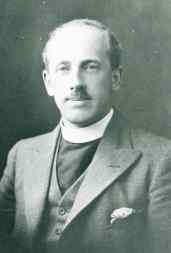
Son of George and Mrs. Rankin of Moneymore. After his early education at Moneymore Primary School, he entered Rainey Endowed School, Magherafelt. In pursuit of his ambition, to become a minister of the Church, he entered Magee College, Derry, and Trinity College, Dublin, and having completed his courses at these Colleges he entered upon his theological course at Assembly’s College, Belfast. Licensed by the Presbytery of Tyrone on 6th December 1945, he became for one year an assistant in Crumlin Road, Belfast, in 1946, and was ordained in Loughaghery on 7th Mary 1947. During the latter part of the Second World War, Mr. Rankin served with the Y.M.C.A., in England and North-West Europe. Shortly after his ordination in Loughaghery, he married Miss Dorothy A. Russell, of Belfast, on 14th August 1947. He was Installed here on 18th September 1963. In 1979 he was Moderator of the Synod of Armagh and Down. Mr Rankin retired from active ministerial duties on 1st November 1988. He died on 27th November 1993, and is buried in the graveyard attached to the Upper Meeting House.
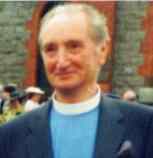
Installed on 16th March 1990 – son of Bob and Doreen Allely, he was born in Tralee, Co. Kerry, on 31st January 1947.
After his early education at the local Church of Ireland National School (1951 – 1958), he entered Bandon Grammar School, County Cork, as a Boarder, from 1958-61 when the family moved to Gorey, County Wexford (his father was promoted to Manager of a local Bank). Moving to Sandford Park School, Dublin in 1961, he passed the Intermediate Certificate with honours in 1962 and Trinity Matriculation in June 1964. Particularly keen on all sports he represented the School at Rugby, Hockey, Cricket, Athletics and Golf. Playing for Leinster Inter-provincial Schools Hockey Team and played for Dublin YMCA from age 15.
On leaving school he entered the banking profession and worked all over the Republic of Ireland. Played rugby for Athlone and Sligo and Hockey for Belfast YMCA and Pembroke Wanderers. Represented Leinster at hockey and played cricket for Leinster CC and Ardamine Ramblers (County Wexford). He also engaged a little in Rallying (driving a Woolsey Hornet) and singing in a band!
Transferred by the Bank to Belfast in June 1968 he joined Belfast YMCA Hockey and Cricket Clubs and became a member of Knock Golf Club and also Kirkliston Castle Golf Club.
After his arrival in Belfast he was Converted to the Lord at a meeting in the YMCA Wellington Hall, Belfast at which Stuart Briscoe was the preacher. He joined Fitzroy Presbyterian Church where Rev Roy Alexander was the minister.
In October 1971, he married Isobel Bristow and set up home in Templepatrick. During 1973 he was promoted to Assistant Manager which necessitated moving house to Belfast, where they became members of Strand congregation, and it was here that their children Peter (born 1974) and Susan (born 1976) were baptised. He was appointed to the staff of the Irish Mission in 1980, as the Superintendent’s Assistant and was commissioned in Strand Presbyterian Church (The first Irish Mission staff member to be commissioned).
He felt the call to the ministry in 1981 and was accepted as a student by the East Belfast Presbytery in 1982. Starting his studies in 1982 at the University of Ulster (Jordanstown), he graduated in 1985 with an honours B.A. degree in Geography & History. During this period he served as Summer Assistant in Donegal, Carnlough and Belfast. Entering Queen’s University, Belfast in 1985 he graduated with a B.D. in 1988. During this period he served as a Summer Assistant in Donegal again and was appointed Assistant Minister in Knock congregation in 1987 and was ordained by East Belfast Presbytery in January 1989. He continued to play hockey and cricket at senior level and golf as often as possible, retiring from hockey and cricket at the ripe old age of 50!
Mr Allely resigned in June 1997, moving to Dungannon and then Craigavon and Vinecash in 2004.
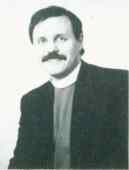
Born in Glasgow, Scotland on Easter Tuesday, 19th April 1960, Rev Daniel Rankin is one of a number of Scottish ministers within the Presbyterian Church in Ireland.
Rev Daniel Rankin was educated at Kingsridge Senior Secondary School, Glasgow. After obtaining three “A” levels he joined the Post Office as a Clerk. It was while studying for his “A” levels that he felt God’s call to full time service. Principal Geoffrey Grogan from Bible Training Institute, Glasgow suggested Daniel should find secular employment for a couple of years. If after two years he still felt God’s call then an application to Bible College would be appropriate.
So, in September 1980 Mr Rankin left Glasgow to attend Lebanon Missionary Bible College, Berwick-on-Tweed. This was to be three years of blessing and significant change. It was while at Bible College he met Lorraine Clarke, an ex-RUC Officer from Belfast. Danny and Loraine married on 2nd July 1982 after their second year. During their final year they applied to WEC International. They hoped to become Church Planters in Thailand. Graduation came in July 1983, Lorraine received a Diploma of Missionary Training, while Danny received a Dip. Th. from Cambridge University.
The Rankin’s spent the next number of years in Thailand. During this time David and Dawn were born. While in Thailand they worked alongside the national church reaching out to villages were the Gospel had never been preached. These were hard difficult days and yet they experienced God’s blessing time and time again.
The end of 1989 saw them back in Belfast again for a year of deputation. As the year closed it became clear to Danny that he should apply for the ministry of the Presbyterian Church. So he resigned from WEC International and began the long application process. During this time he worked as a bank official with the Ulster Bank.
It was during his studies that Stephen, their third child was born. As part of his preparation for ministry Danny was placed as assistant in McQuiston Memorial, Belfast. He graduated in June 1996 receiving B.D. He continued to work in McQuiston until his installation in Markethill on 8th May 1998. On 21st January 2009 he resigned and was installed in Strand Presbyterian Church, East Belfast.

Rev David Irvine was installed as minister of First and Second Markethill Presbyterian Church on Friday, 8th January 2010. He was formerly minister of Albany, Brigh and 1st Stewartstown congregations in the Presbytery of Tyrone, where he served from 1st September 2004 to 7th January 2010.
David was born in Enniskillen on 30th September 1962, second son of George and Anna Irvine. He grew up in the congregation of Cavanleck, near Fivemiletown, where he was ordained as an Elder in 1989. After education he worked as an accountant in practice and then spent several years working as a financial director of a manufacturing company.
On 2nd August 1986 he married Pauline, daughter of Rev and Mrs Arthur Curry. The wedding service was conducted by the bride’s father in Warrenpoint Presbyterian Church.
Sensing God’s call to the Presbyterian ministry David was accepted as a student for the ministry in 1999 and commenced training at Union Theological College, Belfast the following year. He graduated with a Master of Divinity (with distinction) from QUB in December 2003. Serving his assistantship in Dungannon Presbyterian Church under Rev Bob Allely, a former minister of Markethill.
On 17th April 2018 he resigned and was installed in Trinity Presbyterian Church, Ballymoney.
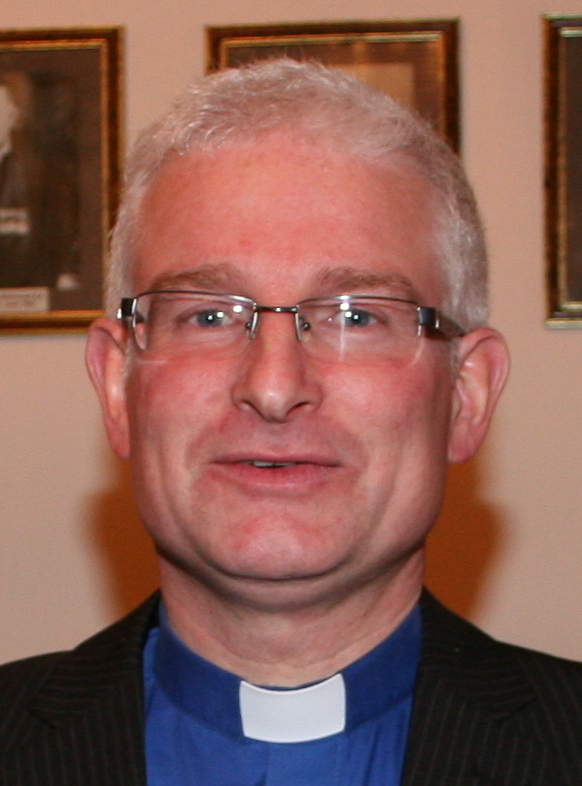
Installed 6th September 2019.
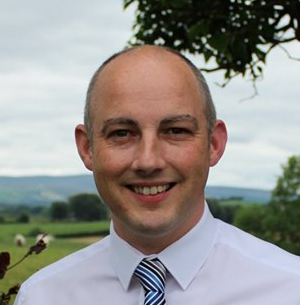
In August 1901, the congregation (First Markethill) presented to Rev and Mrs Morrow an Illuminated Address, which address was returned to the congregation by Mrs Morrow. The illustrations on the Address shows – the new Meeting House with the Tower, which was not built for economic reasons: the old Meeting House and the old Lecture Hall.

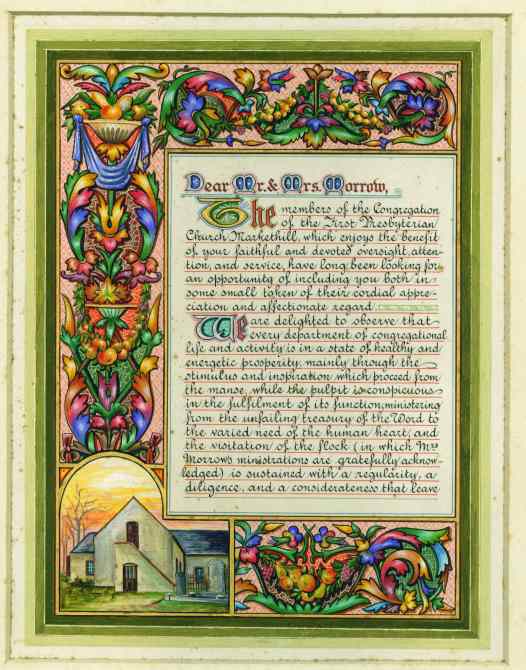
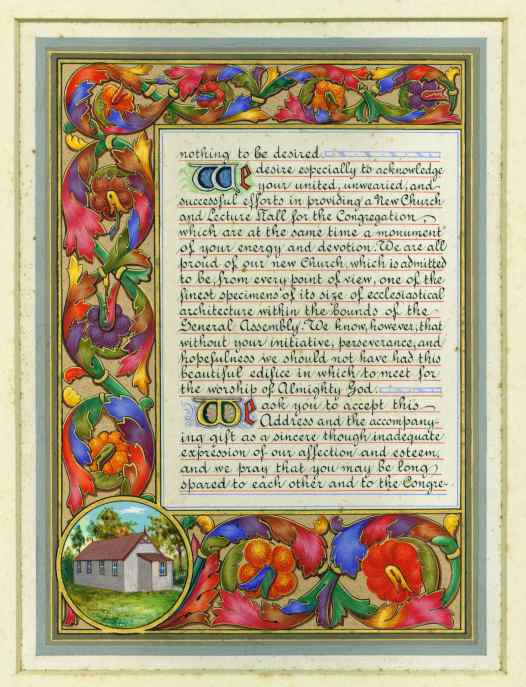
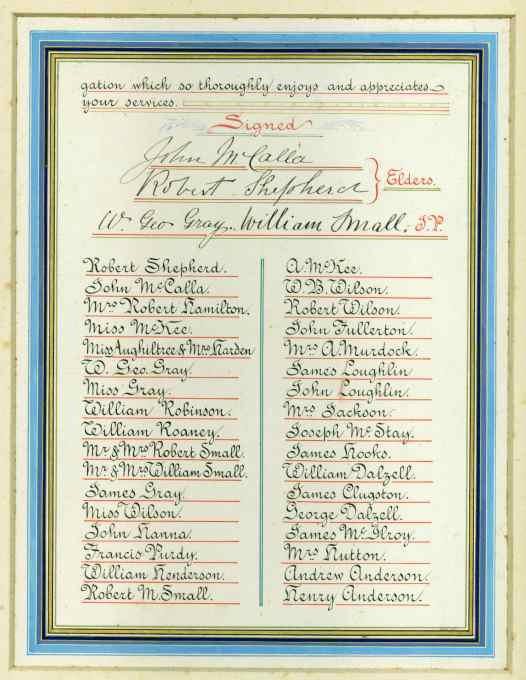

This interesting manuscript written by a James Stuart of Markethill and in the possession of the Presbyterian Historical Society, Belfast, points to the possibility that he, Stuart, was in all probability an elder of the Secession congregation, (Second Markethill). In this manuscript, “Directions for Fellowship Societies in Accession to the Associate Presbytery”, Stuart writes “The above are some regulations for admitting members suited to our present circumstances”
